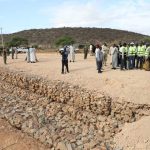In a significant demonstration of economic diversification and cultural innovation, Indonesia’s creative economy has emerged as a powerful driver of national growth, contributing approximately USD 81.6 billion to the country’s GDP in 2022.
This sector’s remarkable expansion continues, with its value increasing from USD 72.6 million in 2020 to USD 90.4 million in 2023, while consistently absorbing 10% more labour annually.
The country’s creative economy, encompassing 17 distinct sub-sectors ranging from fashion and design to film, music and culinary arts, has become a vital pillar of Indonesia’s economic landscape.
According to Wisnu Sindhutrisno, Director for Tourism Promotion in the Ministry of Tourism & Creative Economy, Republic of indoenisa, “Indonesia’s rich cultural heritage serves as the foundation for this creative renaissance, with various sectors showing promising development. The gaming, animation and film industries, in particular, have demonstrated remarkable growth, with local studios producing internationally competitive content and achieving recognition at global film festivals.”
However, this growth hasn’t been without challenges. The Indonesian government acknowledges several obstacles that need addressing.
Infrastructure gaps, particularly in internet access and production facilities, continue to hamper creative workers in regional areas. Additionally, the need for stronger intellectual property protection remains crucial for fostering innovation and creativity.
To address these challenges, the government has implemented various strategic initiatives.
“We have established creative hubs and incubators to promote collaboration and innovation among entrepreneurs, as well as active promotion of creative products in international markets through trade missions, exhibitions and digital platforms,” noted Sindhutrisno.
The state has also developed a robust SME program which has successfully supported thousands of creative entrepreneurs through funding and mentorship, demonstrating the government’s commitment to nurturing this sector.
Parallel to the creative economy’s growth, Indonesia has made significant strides in sustainable tourism development in response to global climate change challenges.
As an archipelagic nation particularly vulnerable to rising sea levels, Indonesia has positioned itself as an aspiring epicenter of quality and sustainable tourism in the Asia Pacific region.
The country’s approach to sustainable tourism is aligned with the United Nations Sustainable Development Goals, implementing comprehensive measures to preserve natural resources while supporting local communities.
“The Ministry of Tourism and Creative Economy introduced several key initiatives, including sustainable tourism guidelines, Tourism Village Awards, and the Cleanliness, Health, Safety, and Environment (CHSE) certification program,” point out Sindhutrisno.
“These efforts are complemented by ambitious environmental programs such as carbon footprint calculation and offsetting, comprehensive waste management systems, and the promotion of zero-waste and carbon-neutral practices in the tourism industry.”
Additionally, cultural exchange programs play a vital role in Indonesia’s international engagement strategy. One of the ways this is implemented is through student exchange initiatives and study tours which offer unique opportunities for young people to experience Indonesia’s diverse cultural landscape firsthand.
The country’s network of tourism villages provides authentic immersive experiences, allowing international students to live with local families, learn traditional skills and participate in daily community activities.
Educational tourism has also seen significant development, with Indonesian universities and institutions offering programs that combine academic learning with cultural immersion.
These initiatives cover various topics, from sustainable development to traditional arts and local governance, all while contributing to the preservation of Indonesia’s cultural heritage.
“Indonesia’s vision for its creative economy and tourism sector remains ambitious,” says Sinhustrino. “The government is committed to positioning the country as a global creative hub, leveraging its cultural heritage while embracing digital technologies. Human resource development remains a key focus, with ongoing investments in training and capacity-building programs to enhance the skills of creative professionals.”
The integration of sustainable practices, creative economic development and cultural exchange programs demonstrates Indonesia’s holistic approach to economic transformation.
By addressing infrastructure challenges, promoting sustainability, and fostering international connections, Indonesia is building a robust foundation for long-term economic growth while preserving its rich cultural heritage for future generations.
These initiatives reflect Indonesia’s broader commitment to balanced development, where economic growth goes hand in hand with environmental sustainability and cultural preservation.
As the country continues to navigate the challenges of climate change and global economic shifts, its emphasis on creative industries, sustainable tourism and cultural exchange positions it well for future success in the international arena.





